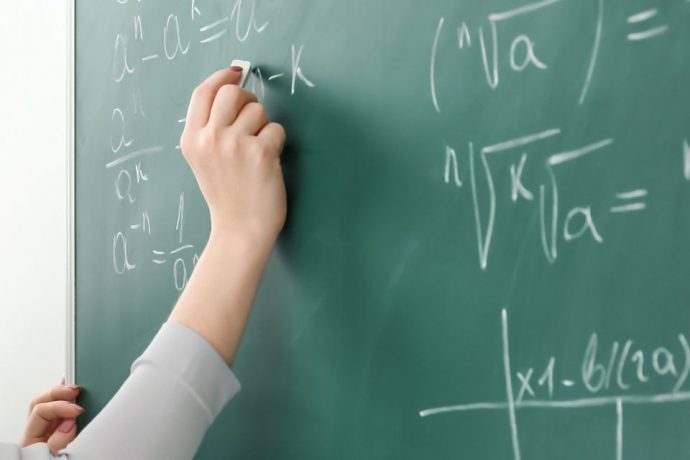
Importance of exploration and originality in an educational environment.
The ability to think clearly is genetically determined and it is this skill that distinguishes humans from lower creatures. “Every human being is unique, with their own qualities, instincts, forms of pleasure, and desire for adventure,” Paulo Coelho once said. According to Jean Piaget, intelligence is the capacity of an individual to adjust to and manage any environment in which they exist. He went on to say that assimilation and accommodation are the two primary processes that underpin human development.
As a result, assimilation and accommodation interact continuously to support a child’s mental development.This process actually begins while the infant is still inside the mother, but it really picks up speed after the baby is born. A youngster constantly absorbs information from its environment, so anything it recognises, it comprehends by simple imitation. This serves as the basis for how it perceives everything around it and is evident from his motions and verbal communication. However, there are several stages in language development.
0–6 years: A child forms a link with their mother and learns in the womb. It babbles for four months. Infants at this age mimic new words and create speech, and they are exceptionally sensitive to certain patterns of language. Indeed, social interaction is crucial to a child’s acquisition between the ages of one and three, during which time they engage more with visuals than with words.
6-7 years: A youngster learns to decode at this period of initial reading; all of the information a child receives comes from his teachers or the print in his hand. Children are glued to the print at this point. Read to the child to encourage him to read. The youngster is tested at 100 words per minute at this point. 35 words per minute for a slow reader. Repetition and intensive reading to children result in automaticity.
7-9 years: When children begin to comprehend the text, they learn to read silently. They start learning for accuracy and fluency and become skilled spellers.
9–14 years: At this point, the child begins learning several disciplines including science, arithmetic, literature, geography, history, and more, making learning bottom up. A youngster learns from a variety of sources, including computers, storybooks, and textbooks. The child’s perspectives expand when new ideas are presented. He must now be precise and fluid.
14–18 years: A lot of reading starts. The student’s understanding on a variety of areas is evaluated. A reader is presented with multiple points of view. For instance, to a youngster, a tree initially consists of leaves, branches, and a trunk. It eventually turns into a photosynthetic unit that is used to make paper, furniture, and other things. However, to a college student, it serves as a source of revenue and political conflict; in other words, trees are a social, political, and economic tool.
Curriculum is not the basis for teaching. A teacher has a unique set of teaching methods for every student that encompass a variety of skills. The teacher must serve as a mediator, allowing the child to perceive the components of the work and to successfully combine them in a positive, upbeat, and anticipatory manner.
Even when group instruction is required, this kind of specialised education is highly child-centered and customised. Every child has a personal, empathetic, and mediating agency in the form of a good teacher. Through the teacher’s thoughtful and compassionate intervention, new technology and approaches can all be harnessed to the teaching task and used correctly for the learner. Perhaps we could teach the way they learn, as suggested by Ignacio Istrada, if a child is unable to learn the way we do.
Since this is a strong incentive for the remaining learning activities, the first portion of the teaching session consists of exercises in which the youngster can achieve 80 to 90 percent success. To give the youngster the impression that they have mastered a skill, learning assignments are broken up into manageable chunks. Therefore, autonomy, mastery, and purpose—the three pillars of successful modern management—are used.
Extracurricular activities are recommended for children based on their interests in order to foster perseverance and confidence. Debates and public speaking, for instance, boost vocabulary and confidence. Participating in sports fosters a drive for success, teamwork, enthusiasm, perseverance, and resolve. Because every child who believes in themselves has parents who believed in them first, parental participation has a significant impact. Praise from teachers has a positive impact. Sadako Sasaki claims that “I was smart because my teacher said so.”
Group activities can be highly motivating as long as the children’s developmental and achievement levels are almost equal. Learning becomes motivating when all students are given the chance to express their thoughts and those opinions are encouraged. Our educational system might be considerably enhanced by these teaching strategies.
Activities that improve fine motor control, including hand grip exercises, would be included at this station. These include ball games, paper-cutting exercises, kid-friendly woodworking projects, play-dough and clay modelling, and painting and drawing worksheets. A child’s fine motor control skills can be enhanced by engaging in leisure activities for half an hour each day. When combined with three worksheets to enhance handwriting in a specific amount of time, students will learn time management skills and enhance their cognitive and mental capacity. Paper cutting or any other activity that gives the child a sense of success must be meaningful in order to help them focus and pay attention.
On a different station, a youngster is exposed to a variety of subjects and topics through daily reading on a range of subjects.They can bring articles from other sources; they are not bound by the curriculum. To help kids grasp the text, comprehension passages are prepared based on their interests and completed in class. Through creative writing in a variety of forms, they learn how to write as well as how to respond to the questions.
Various vocabulary terms and other exercises can be found on laptops and iPads. Indirect techniques are used to cover a variety of topics. For example, studying about photosynthesis involves accessing multiple sources rather than just the literature at hand. This station’s only goal is to help kids see the world more broadly and realise that there are many different ways to learn.
Aerobics and dancing can be used to teach rhythmic movements. Throwing a ball helps people with dyspraxia improve their focus and concentration. Additionally, gymnastics is an excellent method to build flexibility, strength, and balance. However, the activities must be enjoyable rather than taxing.
This educational system does not require a curriculum, and the methods of instruction are creative, engaging, and distinct. Every child is given an equal opportunity to explore and decide what they want to do first; they are not compelled to do anything. This instills in kids the values of effective management, independence, competence, and purpose. The secret is to pique his curiosity and inspire a desire for success in that child.

Content writer, educationist, teacher, researcher, social media manager, and a SEO manager from lahore. She has been working as a freelance academic and non-academic writer for more than 20 years now. She has a passion to learn new things and has a knack for writing and she combines both things to produce write ups she pours her heart out in.

